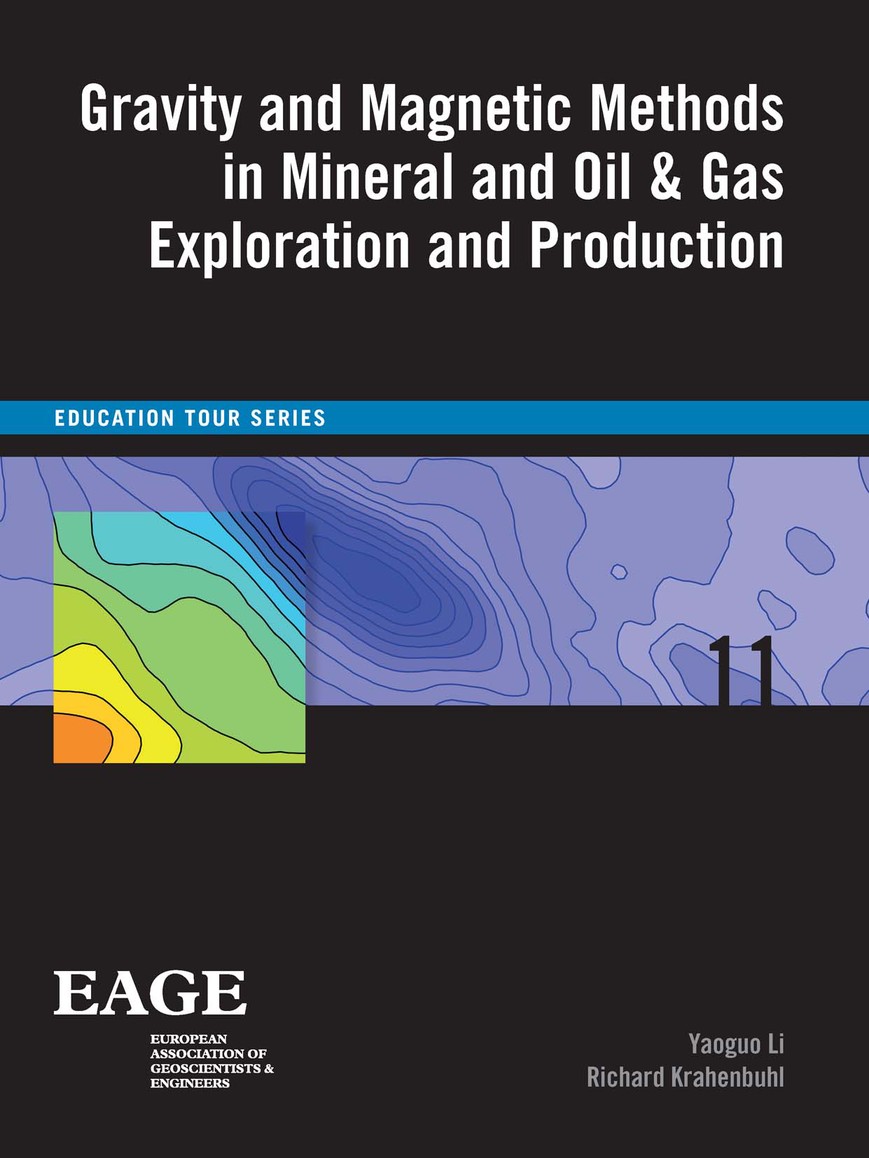- Home
- Books
- Gravity and Magnetic Methods in Mineral and Oil & Gas Exploration and Production (EET 11)
Gravity and Magnetic Methods in Mineral and Oil & Gas Exploration and Production (EET 11)

- By Yaoguo Li and Richard Krahenbuhl
- Format: EPUB
- Publication Year: 2015
- Number of Pages: 155
- Language: English
- Ebook ISBN: 9789462821545
Table of Contents
Acknowledgements
Preface
1 Introduction
1.1. Purpose
1.2. Topics covered
1.3. Outline
1.4. Remarks
2 Basics of gravity and magnetic data
2.1. Gravity anomaly
2.2. Gravity gradient anomaly
2.3. Magnetic anomaly
2.4. Mathematical connection between gravity gradient tensor and magnetic anomaly
2.5. Summary
3 Processing of potential-field data using equivalent source techniques
3.1. Background
3.2. Equivalent source construction using a regulariz“3.1. Background
3.2. Equivalent source construction using a regularized inverse approach
3.3. Efficient solution of equivalent source construction
3.4. Applications of equivalent source processing on uneven surfaces
3.5. Low-latitude reduction to the pole
3.6. Denoising of multiple-component gravity gradiometry data
3.7. Field example: conversion to amplitude data
3.8. Joint processing of multiple data sets
3.9. Summary
4 Fundamentals of 3D Potential-field inversion for physical properties
4.1. Generalized 3D inversion for density contrast or magnetic susceptibility
4.1.1 Inversion algorithm for surface data
4.1.2 Depth weighting function
4.1.3 Bound constraints
4.2. Inversion of general data sets with observations on rugged surface and in boreholes
4.2.1 Sensitivity-based weighting function
4.2.2 Distance-based weighting function
4.3. Bound constraints through a logarithmic barrier method
4.4. Efficient large-scale inversion using adaptive mesh and wavelet compression
4.5. Summary
5 Binary inversion
5.1. Strengths and limitations of interface and physical property inversions
5.1.1 Interface inversions
5.1.2 Generalized density inversions
5.2. The need for binary inversions
5.3. Formulation for binary inversion and solution strategies
5.3.1 Binary inversion
5.3.2 Solution of binary inversion
5.4. Comparison of binary inversion to continuous variable inversion
5.5. Application to salt body imaging
5.5.1 Significance of salt bodies in exploration geophysics
5.5.2 SEG/EAGE 3D salt model
5.5.3 2D binary inversion
5.5.4 3D binary inversion
5.6. Summary
6 Inversion of magnetic data with remanent magnetization
6.1. Direction estimation
6.1.1 Helbig’s moment method
6.1.2 Cross-correlation methods
6.1.3 Synthetic example
6.2. Amplitude inversion
6.3. Magnetization inversion
6.3.1 Magnetization inversion in the inducing-field reference frame
6.3.2 Magnetization inversion using fuzzy c-means (FCM) clustering
6.4. Summary
7 Case histories from exploration applications
7.1. An example on susceptibility inversion: Raglan Deposit, Quebec, Canada
7.2. Three-dimensional inversion of airborne gravity gradiometry data in iron ore exploration, Quadrilateral Ferrifero, Brazil
7.3. Inversion of magnetic data with remanence in kimberlite exploration: Northwest Territories, Canada
7.4. Magnetic amplitude inversion in the exploration for IOCG deposit: Carajás Mineral Province, Brazil
7.5. Magnetic amplitude inversion in gas exploration in basin environment
7.6. Geology differentiation using gravity and magnetic inversions
7.6.1 Alteration mapping
7.6.2 Lithology characterization
7.7. Summary
8 Time-lapse gravity monitoring
8.1. Background
8.2. Comments on time-lapse gravity acquisition and data processing
8.3. Interpretation Techniques
8.3.1 Inversion for the distribution of density change
8.3.2 Inversion for reservoir permeability
8.4. Summary
9 Case studies in time-lapse gravity
9.1. Mature field applications of time-lapse gravity
9.1.1 Gas production and CO2 injection in the North Sea
9.1.2 Gas-cap water injection at Prudhoe Bay, Alaska
9.2. Aquifer storage and recovery (ASR) monitoring
9.3. Geothermal reservoir monitoring
9.4. Detecting production problems during enhanced oil recovery
9.4.1 The case of partial vertical sweep during EOR
9.4.2 Surface time-lapse gravity data
9.4.3 Surface and borehole time-lapse gravity data
9.4.4 Summary
9.5. CO2 sequestration monitoring in an old gas field
9.6. Summary
10 Summary
References
Bio sketches
References
http://instance.metastore.ingenta.com/content/books/9789462821545

-
From This Site
/content/books/9789462821545dcterms_title,dcterms_subject,pub_author,pub_keyword-contentType:Journal105
/content/books/9789462821545
dcterms_title,dcterms_subject,pub_author,pub_keyword
-contentType:Journal
10
5

